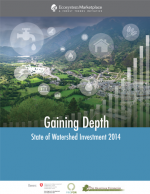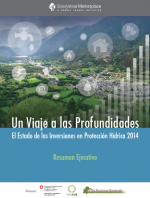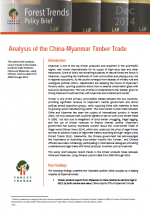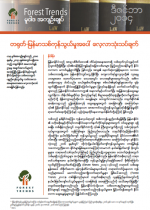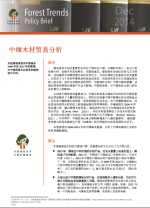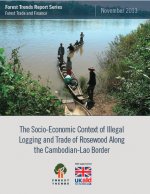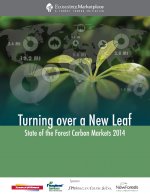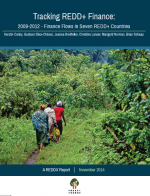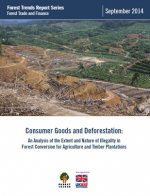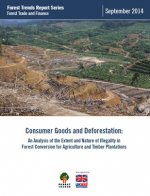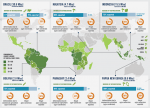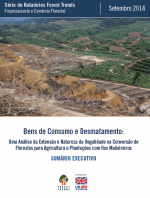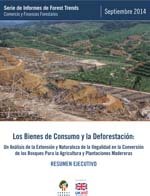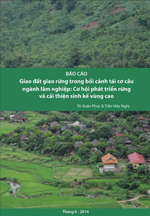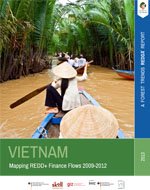State of Watershed Investment 2014
Gaining Depth
Last year, governments and companies invested $12.3 billion (B) in initiatives implementing nature-based solutions to sustain the world’s clean water supplies. According to a new report from Forest Trends’ Ecosystem Marketplace, this funding – which supports healthy watersheds that naturally filter water, absorb storm surge, and perform other critical functions – flowed to more than […]
Dependent Documents
Un Viaje a las Profundidades
By Genevieve Bennett, Nathaniel Carroll - Ecosystem Marketplace/Forest Trends, Ecosystem Marketplace/Forest TrendsAnalysis of the China-Myanmar Timber Trade
By Eve Richer - Forest TrendsThis policy brief analyzes recent trends in the timber products trade between China and Myanmar, using Chinese customs data from 2000 through 2013. Timber is one of the primary commodities traded between the two countries, providing significant revenue to Myanmar’s central government and ethnic political armed opposition groups, while supplying China with materials to feed […]
Dependent Documents
The Socio-Economic Context of Illegal Logging and Trade of Rosewood Along the Cambodian-Lao Border
By Dr. Sarinda SinghSiamese Rovsewood (Dalbergia cochinensis) has recently been listed on Appendix II of The Convention on the International Trade in Endangered Species (CITES). This listing means that source countries are legally required to export only controlled quantities of rosewood with close monitoring and documentation, which is intended to ensure that the international trade is not detrimental […]
Email Signup
Subscribe to any of Forest Trends’ mailing lists to keep up with the news, publications, and events that interest you.
Having Trouble?
If you experience any technical difficulties on our site, please contact Genevieve Bennett, Communications Manager.
State of the Forest Carbon Markets 2014
Turning over a New Leaf
By Allie Goldstein, Gloria Gonzalez, Molly Peters-Stanley - Ecosystem Marketplace, Ecosystem Marketplace, Ecosystem MarketplaceDemand for carbon offsets earned from forest protection or renewal grew 17% in 2013 as companies and governments invested $192 million in efforts to plant trees, improve forest management, support “climate-smart” agriculture, or avoid deforestation. With the effects of climate change already being felt from New York City to New Delhi, the fight to keep […]
2013 Results Report
Sharing Progress on the Path to Adoption of Cleaner and More Efficient Cooking Solutions
The 2013 Results Report: Sharing Partner Progress on the Path to Adoption of Clean Cooking Solutions is the second in a series of annual reports tracked by the Global Alliance for Clean Cookstoves ( the Alliance ), which Forest Trends’ Ecosystem Marketplace administered, analyzed and wrote. With greater Alliance partner responses, the report tracked a […]
Tracking REDD+ Finance
2009-2012 - Finance Flows in Seven REDD+ Countries
Between 2009 and 2012, REDDX tracked US$1.2 billion in REDD+ commitments and US$378 million in disbursements in seven tropical forest countries: Brazil, Ecuador, Colombia, Ghana, Liberia, Tanzania, and Vietnam. The Forest Trends REDD+ EXpenditures Tracking Initiative (REDDX) was launched in 2011 to provide greater transparency around the financial flows that have been committed for REDD+ […]
Consumer Goods and Deforestation
An Analysis of the Extent and Nature of Illegality in Forest Conversion for Agriculture and Timber Plantations
By Sam Lawson - Forest TrendsExports from Illegal Conversion Worth US$61 Billion and Responsible for 25 Percent of Tropical Deforestation; Brazil and Indonesia’s Illegal Land Clearance Highest in the World. WASHINGTON, DC | 11 September 2014 — A comprehensive new analysis released today says that nearly half (49%) of all recent tropical deforestation is the result of illegal clearing for commercial […]
Dependent Documents
Executive Summary: Consumer Goods and Deforestation
An Analysis of the Extent and Nature of Illegality in Forest Conversion for Agriculture and Timber Plantations With support
By Sam Lawson - Forest TrendsBens de Consumo e Desmatamento
By Sam Lawson - Forest TrendsLos Bienes de Consumo y la Deforestación
By Sam Lawson - Forest TrendsAgriculture and Forest Commodities
From Drivers of Deforestation to Sustainability Champions
By Sarah Lowery - Forest TrendsLarge consumer-facing companies, agricultural producers, NGOs and even governments are intent on reducing deforestation from commodity production and making supply chains more environmentally sustainable. To identify cutting-edge solutions – and to build and strengthen the partnerships that will be key to implementation – Forest Trends convened Katoomba XIX – Scaling up Sustainable Supply Chains in […]
Dependent Documents
Commodities Agrícolas e Florestais
By Sarah Lowery - Forest TrendsMaterias Primas Agrícolas y Forestales
By Sarah Lowery - Forest TrendsVIETNAM: Mapping REDD+ Finance Flows 2009-2012
By Nguyen thi Xuan Huong, Dang Viet QuangForest cover in Vietnam is estimated at 13.8 million hectaresa number which has increased significantly since the 1990s, due to a recent surge in reforestation efforts leading to increases in plantation forest. Despite this, extensive deforestation and degradation remain, particularly along the Central Highlands and Central Coast, and within the south of the country. Therefore, […]

